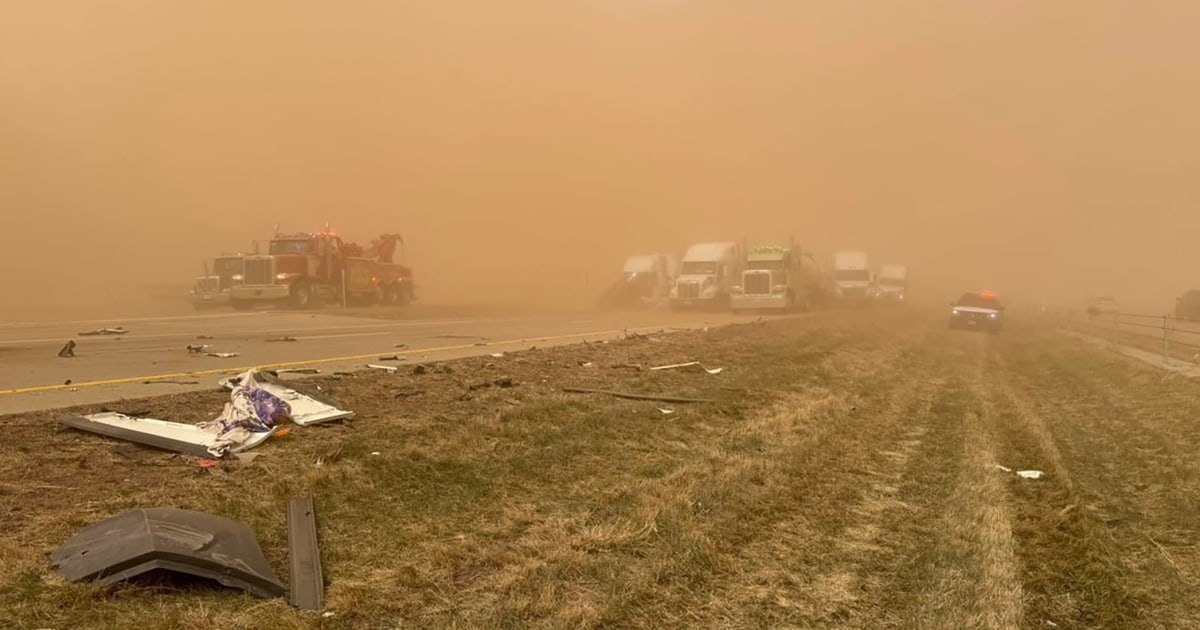Texas Fires Rage as Tornado Threat Looms Over the Heartland
As severe weather conditions escalate, Texas faces devastating wildfires while the central U.S. braces for potential tornado activity. This dual threat raises concerns for safety and emergency response across the region. The combination of extreme heat, dry conditions, and shifting weather patterns has created a precarious situation for millions, making it essential to understand the implications and the necessary responses to these natural disasters.
The Current Situation in Texas
In recent weeks, Texas has experienced a surge in wildfires, primarily due to a prolonged heatwave and lack of rainfall. The conditions have led to the perfect storm for wildfires to ignite and spread rapidly. From the vast expanses of West Texas to the densely populated suburbs of Houston, the fires have wreaked havoc, destroying homes and displacing families.
According to the Texas A&M Forest Service, over 100,000 acres have already burned this season, and the numbers are rising. The agency has deployed hundreds of firefighters to combat the blazes, utilizing aerial support and ground crews to contain the flames. The situation is dire, and local communities are urged to stay vigilant.
Understanding the Fire Dynamics
Wildfires are not merely a product of high temperatures; various factors contribute to their severity:
- Vegetation Dryness: With the ongoing drought conditions, vegetation has become extremely dry, acting as tinder for fires.
- Wind Patterns: Strong winds can carry embers over long distances, igniting new areas and complicating containment efforts.
- Human Activity: Many wildfires are sparked by human activities, such as campfires, discarded cigarettes, or power lines.
These elements combined create a highly volatile environment that can lead to rapid fire spread, making firefighting efforts challenging and dangerous.
Emergency Response and Community Preparedness
In response to the wildfires, local and state authorities have activated emergency response plans. Here are some key strategies being implemented:
- Evacuation Orders: Communities at risk are receiving evacuation orders to ensure the safety of residents.
- Firebreaks: Firefighters are creating firebreaks—gaps in vegetation—to slow the spread of the fire.
- Public Awareness Campaigns: Authorities are urging residents to prepare emergency kits and have an evacuation plan in place.
Community engagement is crucial during these times. Local organizations are rallying to provide support, resources, and information to those affected by the fires.
The Tornado Threat in the Heartland
While Texas grapples with wildfires, the central U.S. faces another peril: tornadoes. The National Weather Service has issued warnings as storm systems move through the region, bringing the potential for severe thunderstorms and tornado activity.
During this time of year, atmospheric conditions are conducive to tornado formation, especially in the “Tornado Alley” region. Factors influencing this risk include:
- Warm, Moist Air: The clash between warm, moist air from the Gulf of Mexico and cooler air from the north can create instability.
- Wind Shear: Changes in wind speed and direction with altitude can enhance storm rotation, leading to tornadoes.
Residents in affected areas need to stay informed and prepared for rapid developments. Tornado watches and warnings can be issued with little notice, making it crucial to have a reliable weather alert system in place.
Balancing Fire and Tornado Preparedness
In light of these concurrent threats, it’s vital for communities in Texas and the central U.S. to adopt a comprehensive emergency preparedness strategy. Here are some steps that individuals and families can take:
- Create an Emergency Plan: Outline what to do in case of a wildfire or tornado, including meeting points and communication methods.
- Build an Emergency Kit: Include essentials such as water, non-perishable food, medications, and important documents.
- Stay Informed: Regularly check local news and weather updates, and consider using weather apps to receive alerts.
By taking these proactive measures, individuals can significantly enhance their safety and preparedness in the face of natural disasters.
Community Resilience and Recovery
Communities affected by wildfires and tornadoes often face a long road to recovery. Historical context shows that resilient communities can rebuild stronger than before. After the immediate threats have passed, the focus shifts to recovery efforts:
- Support Networks: Local organizations and charities play a pivotal role in providing assistance to those affected.
- Government Aid: State and federal assistance programs can help with rebuilding efforts and provide financial support to families.
- Community Engagement: Involving residents in recovery planning ensures that the needs of the community are met.
Through collaboration and support, communities can emerge from these crises with renewed strength and unity.
Conclusion: Hope Amidst Adversity
As Texas battles raging fires and the heartland braces for the threat of tornadoes, the resilience of communities shines through. While the challenges are daunting, they also highlight the importance of preparedness, community support, and emergency response. By staying informed and engaged, residents can navigate these turbulent times with hope and determination. It is essential to remember that after every storm, the sun will shine again, and together, communities will rise to face whatever comes next.
See more Your Daily Weather



